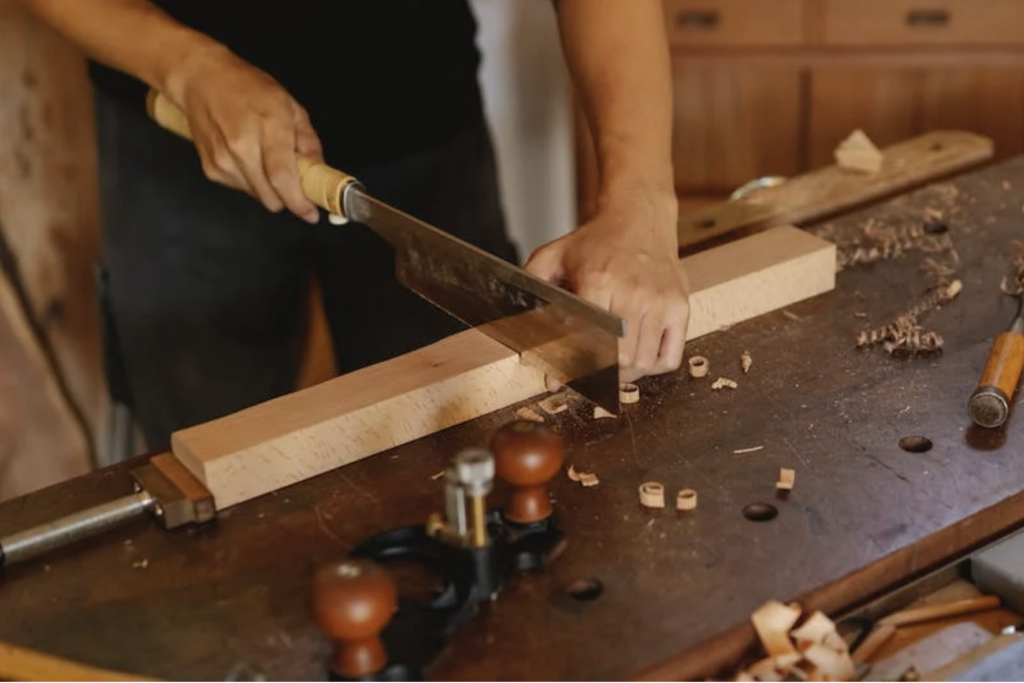What is a Pruning Saw? A Comprehensive Guide
In the realm of gardening and arboriculture, few tools are as indispensable as a pruning saw. As the gentle whisper of leaves in the wind intertwines with the resilience of branches reaching skyward, the art of tree care demands a delicate balance between preservation and cultivation. Enter the pruning saw – a stalwart companion for every gardener, landscaper, and tree enthusiast. To unravel the essence of this tool, let’s delve into the question: What is a pruning saw? Whether you’re a seasoned horticulturist or a budding green thumb, join BeBest on a journey through the intricate world of pruning saws as we unlock the secrets to shaping nature’s beauty with precision and finesse.
What is a Pruning Saw?

A pruning saw is a versatile and indispensable tool for gardeners, arborists, and homeowners alike. It is specifically designed to make clean and precise cuts through branches and stems, enabling efficient pruning and maintenance of trees, shrubs, and other plants.
Benefits of Using a Pruning Saw
Efficient Cutting Power
Unlike regular hand pruners or shears, pruning saws have longer blades with aggressive teeth, allowing for powerful and rapid cutting through thicker branches. This efficiency saves time and effort when tackling larger pruning tasks.
Clean and Healthy Cuts
Pruning saws are designed to create clean and precise cuts, minimizing damage to the plant tissue. The sharp teeth of the saw ensure a smooth finish, reducing the risk of tearing or splintering the branch, which can lead to diseases or insect infestations.
Versatility
Pruning saws come in various shapes and sizes, making them suitable for a wide range of pruning tasks. Whether you need to trim small branches, remove deadwood, or undertake major pruning operations, there is a pruning saw model available to meet your specific needs.
Safety and Control
Pruning saws are designed with safety in mind. Many models feature ergonomic handles with non-slip grips, minimizing the risk of accidents while providing optimal control during cutting.
How to use a pruning saw
Choosing the Right Pruning Saw
Before diving into pruning, it is essential to select the most suitable type of pruning saw based on the task at hand. Consider factors such as blade length, tooth size, handle design, and portability requirements.
Identifying the Correct Cutting Angle
To make effective cuts while preserving plant health, it is crucial to identify the correct angle for each pruning job. The two primary cutting angles used with pruning saws are the slant cut and the collar cut.
- The slant cut involves making a 45-degree angled cut just above the bud or lateral branch. This technique promotes outward growth and prevents water accumulation on the cut surface.
- The practice of collar cutting involves precise incisions slightly past the collar, which designates the swollen area at the intersection of the branch and the trunk. By preserving the integrity of the collar, the tree effectively initiates its own wound sealing process, consequently mitigating the susceptibility to potential diseases or infestations.
Applying Proper Pruning Technique
When using a pruning saw, it is important to follow these best practices to ensure successful pruning:
- Start by making an initial undercut on the underside of the branch, a few inches away from the final cut. This prevents the bark from tearing and causing damage as the branch falls.
- Next, make a top cut slightly further along the branch from the undercut, allowing the weight of the branch to naturally separate it from the tree.
- Finally, remove the remaining stub by making a clean cut just outside the branch collar.
Safety Tips When Using a Pruning Saw
Using Dull Blades
A common mistake is attempting to prune with a dull blade. A sharp pruning saw not only ensures efficient cutting but also reduces the effort required and minimizes damage to the plant. Regularly sharpening the blade will enhance its performance and prolong its lifespan.
Neglecting Safety Measures
When using garden tools such as pruning saws, safety should always be your top priority. Ensure that you’re wearing protective gear like gloves, goggles, and sturdy footwear. Additionally, remember to avoid overreaching or standing on unstable surfaces while using a pruning saw. Following these safety guidelines is essential to prevent accidents and to ensure a secure pruning experience.
Incorrect Cutting Techniques
Improper cutting techniques can lead to unnecessary damage to the plant and hinder its growth. Avoid making flush cuts (cuts that remove the branch collar) or leaving large stubs, as both can impede the healing process and make the plant more susceptible to diseases and pests.
Pruning at the Wrong Time
Pruning at the wrong time of year can have adverse effects on the plant’s health and growth. It’s crucial to understand the specific pruning requirements of each plant species. For example, some plants are best pruned during their dormant season, while others require pruning after flowering. Research the optimal pruning times for your specific plants to ensure they thrive.
Over-Pruning
Over-pruning, also known as “topping” or excessive pruning, can weaken the plant and inhibit its ability to produce energy through photosynthesis. It’s important to strike a balance between removing unwanted branches and maintaining the overall health and structure of the plant.
In order to ensure the sustained vitality of the plant, it is advised to exercise caution by avoiding the removal of an excess of one-third of its foliage within a singular pruning session.
Conclusion
A pruning saw is an essential tool for maintaining the health, beauty, and structure of your garden. Its efficient cutting power, ability to create clean cuts, versatility, and safety features make it indispensable for pruning tasks of various magnitudes. By selecting the right pruning saw, employing proper techniques, and avoiding common mistakes, you can enjoy the benefits of this invaluable garden tool while promoting the vitality of your plants.
Related Articles